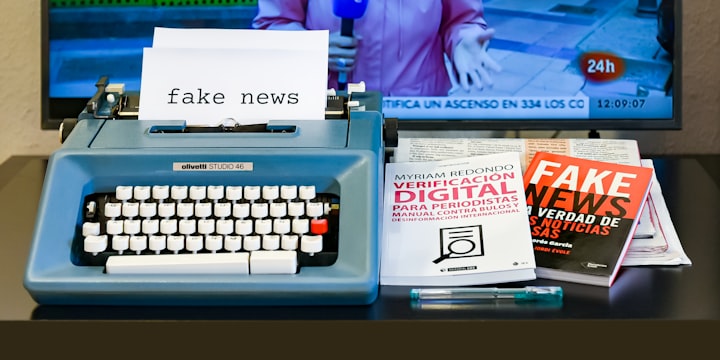
INFORMATION DOMAIN – AN OVERARCHING STRAND OF NATIONAL SECURITY IN POST-TRUTH ERA
Misinformation and fake news have been spearheading the campaign to weaken Epistemic Security. Misleading facts and selective news has created a stir of emotions leading to conflict of interest between various players on the National Security forum leading to emerging threats of both Internal and External nature.
This has been a running theme of the pandemic too: at various times, public health officials and politicians have attempted to persuade people to do things that benefit both themselves and their communities, from social distancing to wearing masks. Many have done so, but some people have been more resistant to the advice. False information about vaccines and face coverings, ineffective cures, and unfounded rumors about the origins of Covid-19 have made it exceedingly difficult to coordinate public behavior. However, because of the advances in technology, the information domain has become a new environment in which nations, groups, and individuals can operate and advance national security objectives – much like land, sea and air.
In February 2019, a British House of Commons committee published a report warning that fake news poses a grave threat to democracy. Democracy is based on an informed and aware public. Furthermore, a state of affairs in which different groups in society increasingly dispute the facts detracts from the ability to exchange opinions and conduct a sound public and political discussion on issues that must be decided. An absence of legitimate public debate impedes constructive processes of policymaking, increases the lack of trust between disputing groups, aggravates social polarization, and is liable to culminate in violence. In order to make sound national security decisions, participants in relevant discussions must have a good grasp of the strategic, operative, and tactical situation. They must understand what is happening, describe the problems on the agenda, consider possible options for action, and in the end make decisions that directly affect the lives of civilians and soldiers. Errors in understanding reality are liable to result in wrong decisions in policy design, operational planning, and force build up. Intelligence is designed to make it possible to understand the situation involving the enemy and the environment, while other agencies are designed to help understand the status of one’s own forces.
Some of these old and familiar problems have been greatly intensified by the information revolution, and especially by the information explosion (the huge volume of data, information, and knowledge emerging at unprecedented speed and in a variety of differing formats). Making decisions about national security based on beliefs, opinions, and feelings is obviously questionable, and the same is true about reliance on falsehoods, distortions, errors, spin, and conspiracy theories.
The principal challenge, of course, is to prove empirically that there are now new problems that differ from those familiar from the past. In national security affairs, new problems are usually discovered following a crisis or failure, leading to a more insightful understanding of reality. Various writers have detected signs of such new problems involving post-truth in events that occurred in the past two decades, most notoriously the question of weapons of mass destruction possessed by Saddam Hussein and the war in Iraq. Nevertheless, whether the problems involved are genuinely new is an open question. The failures in clarifying and understanding those events can certainly be described in terms of the familiar problems from the past.
A major portion of the responsibility for clarifying and understanding reality rests with intelligence organizations. It appears that intelligence personnel are indeed the first to spot the grave consequences of post-truth and fake news for national security.
The current period features an escalation of partisanship and conflicts between competing ideological and political groups (right and left, conservative and liberal). Political groups have always struggled for priorities, influence, and the power to promote their interests. However, these conflicts have intensified in recent decades, reflected in growing disagreement on priorities and values, extreme ideologies of leading figures and parties in the political arena, and less willingness among political parties to compromise and cooperate.
The human memory is a fallible system, prone to error and distraction. The brain remembers information regardless of whether it is true or false. In this era of fake news and misinformation, individuals have a much more difficult time judging what is correct and incorrect. Human fallibility is also exacerbated by the technological landscape, with a growing body of scholarly work suggesting that the internet is changing the way we think, and making us more susceptible to irrelevance, rumor, and supposition. Looking, searching and parsing information online have led to forms of shallowness.
If these behaviors are also found to be present in the general population that is receiving a significant proportion of their news from social media, it could indicate that they are not applying critical thinking to what they read, leaving them highly vulnerable to believing fake news.
Strategic communications efforts at the national (and regional) levels have been ramped up to counter fake news that constitutes disinformation. Websites have been set up by independent groups or states as mechanisms to debunk fake news that constitute disinformation and other falsehoods. There are several examples from across the globe. While important, these sites would not reach out
to those who are not predisposed to fact-checking owing to their cognitive biases or due to digital illiteracy. Moreover, this form of debunking is slow. It requires an individual who is curious to uncover whether a news item is false by firstly, not sharing the item further; and secondly, fact checking at one of these sites. It also assumes that the reader will trust the findings of the fact checkers, whereas the fact checkers themselves are often accused of being biased.
Social media companies are exploring other methods. As seen from Facebook’s announcement, it will be hiring more than 1,000 people to review political advertisement purchases in order to better protect the US from the threat of disinformation through fake news. The method of targeting advertisement purchases essentially aims to reduce the volume of fake news by removing the financial incentive for its creation. This method can be employed against fake news used for disinformation campaigns and misinformation (propagated without a broad political aim, either with or without malicious intent and achieving viral status)
Recommendations
a. Defending the Information Domain: These efforts need to include the full spectrum of the information domain. This must include satellite communications, television and radio systems, and wireless services.
Satellite communications provide the ability to move large amounts of information, quickly to locations throughout the world. As indicated previously our weapon and navigation systems have become dependent on GPS information systems. This data is vulnerable to an adversary’s use of the electromagnetic spectrum to disrupt our transmissions. As more countries explore the use of space, the interruption or disruption of satellite information needs to be addressed and dependency on a single satellite communication be reduced as much as possible.
Television and radio systems are widely used as methods for mass notification and alerting. If these systems become disabled or false information is inserted, mass panic could result. Our television networks could be easily taken over by an adversary and used as a tool for propaganda or misinformation.
Radio frequency scanners capable of monitoring fire department and police communications are commercially available and can be easily purchased by the general public. The information transmitted over these unsecured radio networks could be used to gain information for secondary attacks. Targeting first responders after an attack is a tactic that has been widely used by insurgents in Iraq, the Irish Republican Army and even pro-life activists after attacks on abortion clinics.
b. Exploiting the Information Domain: The intelligence community and federal law enforcement agencies, such as the Federal Bureau of Investigations, already have systems in place to exploit the information domain. The legal issues are pretty clear when dealing with foreign adversaries however we need to develop a national strategy for exploiting the information domain on domestic threats. This would require balancing civil liberties with national security. The information domain does not recognize national boundaries and threats to national security could originate from within our national border as easily as it could come from overseas.
c. Protecting our Critical Information: We need to protect information that reveals vulnerabilities and programs that are vital for national security as well as the operations of the bureaucracy that could possibly be exploited by an adversary. We, as citizens, demand transparency and expect the media to hold the Government accountable to provide it. However, transparency and the release of sensitive information needs to balance with national security concerns.
d. As in Instrument of Power: For decades, the information domain has been used to assert the United States’ ability to create advantages and influence events in the name of national security. There are numerous examples of how the United States could use the information domain to apply its influence to global events. It could easily influence elections, support pro-American efforts, effect business transactions, create tension between nations, etc.
Conclusion
There is no silver bullet. Efforts to counter fake news must comprise both legislative and non-legislative approaches, each has its own challenges, while taking into account several considerations. These approaches must be grounded in an understanding of how technology enables fake news to spread, factoring in research on human predisposition to believing fake news (as well as the changing media consumption patterns of digital natives). It would help to make a distinction between the different categories of falsehoods that are being
propagated using fake news as the medium. This includes grappling with the possibility of influence operations (disinformation) as those conducting it would seek to adapt their tactics in the long run in order to circumvent these approaches. Conflating all falsehoods as a homogeneous fake news phenomenon runs the risk of developing ineffective approaches. While legislation defines the unlawfulness in and addresses the distribution of fake news, a long-term solution would also require building social resilience so that opinions and emotions cannot be easily swayed by falsehoods.






Comments
There are no comments for this story
Be the first to respond and start the conversation.